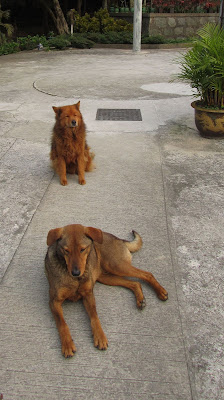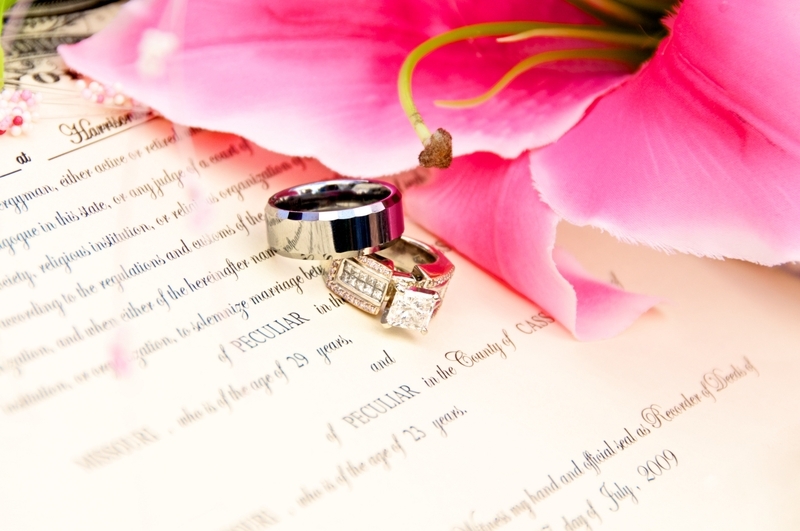偶爾在博客上刊登一些翻譯習作,都是英譯中的,這次轉變一下,把小思去年自日本關西回來後所寫的四篇文章摘譯成英文,主題是安藤忠雄設計的
司馬遼太郎記念館。譯文後附上原文節錄。
The spirit of writing never dashes
I've long yearned for visiting the
Shiba Ryotaro Memorial Museum in Osaka City. It attracts me not only because it's an
Ando Tadao's design, but also due to its huge wall bookshelf with tens of thousands of books.
Taking an alleyway from the main street, Shiba's house is located in a quiet concealed lane in a manner similar to most authors' former residences, only revealing itself through pale road signs along the path. Outside the garden door, some elderly volunteers, who were also Shiba's loyal readers, were on duty and guided us around. Trees and grass were thriving, vivacious and lively. The house lay sideways to the path, with study room's lamp on, books on the desk, bookshelf tidying up, and a felt in front of the chair. It looked like that Shiba had just left the study room for a walk and would be back after a while.
Passing through the Ando's signature curving glass corridor, I hardly slowed down my steps as the main house was at the end of the corridor. However, we still watched the guide video. It told that Shiba's collection of some 20,000 books was remained in his house, taking back in the wall bookshelf and various bookshelves in study room, stack room, front hall, under the corridors and along the wall. I paid special attention to the books he read. What does a historical novelist read? The books ranged over various topics, such as local chronicles, sociology, Japanese history, military history, history of Buddhism, daily life of ordinary people, biographies, works of the notable, etc. It's said that he read each and every book related to the theme of his writing. I believe it's what a historical novelist should do.

After the guide video, we walked downstairs underground to look up at the 11-foot huge wall bookshelf as Ando had been, gazing humbly at the space where the spirit of writing never dashes.
The best former residence of authors
I love visiting authors' former houses, in the hope to look for traces and artistic conceptions of people who express their souls through words.
Shiba's former residence set an example for the rest. In addition to the wall bookshelf at which Ando made us look up and his unique architectural language of exposed concrete construction, he also intentionally preserved the original features of Shiba's house to show his respect. Two years after the author's death, Ando took on the assignment of building the memorial. He was greatly in awe of the books Shiba read and collected, hence determined to conserve his house, his books and accordingly his spirit.
The study room was burst with the author's vitality. Under the glow of the lamp, all stationery was on the desk, as though its master had left a moment ago and would return soon. Above all, it's how the books were preserved. Shiba wrote historical novels and books were his source of nutrition, which Ando called that "the origin of creation". In 1973, in
Kukai no fukei, Shiba depicted the story of Kukai, the grand Japanese Buddhist master, his stay in Tang China and his subsequent return. He then collected a lot of books on the history of Buddhism, works of Kukai and the historical bibliography of Tang China. In 1977, to write
Kouu to Ryuho, he collected historical books of Chu-Han contention, a period from 206 to 202 BC before the establishment of Han China, and skimmed through the chronologies to an extent that papers were dilapidated.
Books preserve the spirit of an author. Breaking apart the collection will lose the significance. Neither is it a good arrangement for us to build a person library for the author and categorize the books according to library system. The Shiba Ryotaro Memorial Museum has demonstrated how to preserve an author's residence.
Shiba's manuscripts
I like reading author manuscripts, paying extra attention to the areas they made amendments. In the shop of the memorial, I bought a printed version of Shiba's manuscript, For those of you living in the 21st century, specially written for textbooks of primary six schools in 1989. Earlier I had read its Chinese translation in the Internet. I feel it's not easy for Shiba, a renowned historical novelist, to write for primary six school students. However, the warm and deeply sincere note in his writing impressed me. His teaching should be remembered by the adult, as well as school kids.
"The science and technology of the 21st century will become more advanced, won't it? Nevertheless, you should not allow yourself engulfed by it. Man should act as a river, identifying his or her direction to control the flow of science and technology. I hope all of you can ascertain yourself and guide the science and technology to a correct path."
Shiba, with other educators and literary authors of post-Meiji modernization, put an emphasis on the respect to the nature and mutual help of human beings. We believe it's the way how we can live on.
This manuscript highlighted one of the characteristics of Shiba's – he liked to use pencils of different colours in his papers. Green pencils were to delete characters. He put forth his strength in crossing out the sentences and covered all the words written in ink pens. Blue, yellow and red pencils were to add circles and then write characters inside circles. Looking at the colourful manuscript, I immersed myself in Shiba's garden. If I had knew Japanese, I could have traced the relocation of words and sentence and joined together to form again the soul picture of Shiba. Until his death, Shiba declined to use computer for writing. Manuscript was one of his insistences of not being controlled by science and technology.
Paying respect properly
Although the memorial was a design of Ando, it's not of his typical design – lacking the usual contrast of the shadow with the light.
The memorial, consisting of a curving corridor and a two-storey main structure, was in a sufficient and even lighting condition. The cabinet in the lower level exhibited Shiba's daily stationery, eyeglasses, manuscripts, etc. while the wall bookshelf of the opposite direction correspondingly displayed how he categorized his books according to his writing. This design was so important that it explained the origin of Shiba's creation, his thought, his emotion and his research nutrition. Ando usually made use of space to pinpoint vastness, while the vastness of the memorial gave the focus on substance. As Ando said, "Relying on the carefree and unique culture will surprisingly give rise to the strength of our thoughts." He paid his respect to the author in this manner.
There was a small screening room at the underground two. The volunteers seriously reminded us of watching the documentary on time. It followed Shiba's trail of obtaining writing materials for Moeyo Ken and travelled around Hokkaido and other related places. The original piece was also recited in the film. It's a meticulous and affectionate masterpiece.
I contemplated while I watched. Collections of books of Hong Kong's authors were scattered in the universities, the Central Library, second-book stores and waste paper recycle markets. They were what I was ashamed of.
文字精神不滅的空間(《明報》,2011/11/26)
......一直渴望去參觀東大阪市的司馬遼太郎記念館。這館的吸引力非獨因為安藤忠雄設計的關係,而是那堵藏着幾萬冊書的書牆。從大街轉入小巷,跟許多作家故居一樣,都隱藏在靜雅小巷中,只是沿路已見雅淡的指示標誌。小園門外有上了年紀的義工來指引──作家的忠實老讀者來值班。這個季節沒有油菜花,可是小園幽幽,草樹繁茂,生命的感覺很強。先是小徑旁的故居所在,遙望隔了玻璃的書房,燈亮着,書桌上,還有書。貼牆書架上也整齊列了書,躺椅前的腳墊上疊好一張暖氈,一切妥貼明亮,彷彿司馬遼太郎剛站起來,離開書房走出去散步,就快回來的樣子。
經過著名的安藤忠雄式突顯光影的玻璃迴廊,我幾乎沒停留步履,只因盡頭處就是記念館的主體所在。一進去,那堵書牆在望。可是我們還是乖乖先看了介紹錄影片。這扼要指引很重要,司馬的藏書沒有外移,除了書牆上兩萬多本書外,原來書齋、玄關、廊下、書庫,各邊均全是書架,共有兩萬多本。我特別注意他所讀的書,一個寫歷史小說的作家讀甚麼書?地方志、社會學、日本史、軍事史、佛教史、庶民生活史、人物傳記、名人全集……據說只要與他要寫的主題有關的書,無一遺漏,我相信這才是歷史小說家的應有本色。
看畢介紹片,我們就沿梯階下地下一層。十一公尺擎天書牆,甚麼叫仰望?安藤忠雄就教我們一起站在書牆下,謙卑地仰望這文字精神不滅的空間。
作家故居的夢(《明報》,2011/11/27)
我愛探訪作家故居。盼望在那兒尋索一個用文字表達心靈的人的氣韻痕跡。……
……司馬遼太郎的故居,果然圓了作家故居的夢。先別說安藤忠雄設計的那堵叫人仰望的書牆、清水混凝土的獨特建築語言,只說安藤的刻意保持故居原貌的崇高敬意。他在司馬遼太郎逝世兩年後,承接了建館委託,就下定決心要顯示作家的著作精神面貌。他給所讀所藏書震懾了,保留書,即保留作家的心靈。故首要條件是讓故居原樣存在。
那書房,真夠作家的生氣。溫煦燈光下,一切寫作文具在,彷彿作家剛走開,很快就回來。還有最理想的是書的保存。作家寫歷史小說,所讀書就是精神養分,安藤稱之為「創作の原點」。1973 年寫《空海の風景》,描弘法大師入唐至歸國故事,他的藏書就有大量佛教歷史、空海全集、唐代歷史文獻。1977 年寫《項羽と劉邦》,藏書均見漢楚史籍。所用歷史年表已翻得破殘不堪,泛黃的紙本得到多少作家的手澤?
保存作家的心靈,拆散了的藏書,已失去意義,就算成為個人文庫,卻依圖書館例編碼入藏,也不見得理想。司馬遼太郎的記念館,是示範,圓了作家故居的夢。
司馬遼太郎的手稿(《明報》,2011/12/03)
我喜歡看作家的手稿,特別細讀他們的修改痕跡。在司馬遼太郎記念館小賣部,我買了一本他在1989 年專誠為小學六年級教科書寫的〈給活在二十一世紀的你們〉的手稿印刷版。這文章的中譯本早在網上讀到,一位大歷史小說作家,要為小學六年級學生寫文章,我總覺真的不容易下筆。但讀著他的文章,很感動,情真意重,不應只是小學生讀,成人讀了,也一定會記住他的勸勉。……
「二十一世紀的科學技術應該更發達了吧?但不能讓科學技術,有如洪水般地吞沒你們,人應該像河川一樣,確立流向來支配科學技術,希望你們能把科學技術引導到正確方向,使自己更確定自己。」他與明治維新後許多教育家文學家一樣,講求人對大自然的崇敬,人與人之間的互助,這是人類自存之道,我們應該相信。
這手稿還突出一個司馬遼太郎的寫稿特點。他喜用不同顏色的鉛筆,在稿紙上圈來劃去。綠色是把文字刪去,劃得很用力,墨水筆寫的字給全蓋了。藍色、黃色、紅色、畫圈圈,再在圈中加字,那些不同顏色一定具備隱喻。注視那花碌碌的手稿,好像進入司馬遼太郎的花園。如果懂日文,可以從中追查一花一葉的位置變換,試試湊拼成司馬遼太郎的心靈圖畫。司馬遼太郎直到去世,都不用電腦寫稿。手稿,也正是他不給科學技術支配的一種堅持。
這樣才是致敬(《明報》,2011/12/04)
……雖然這是安藤忠雄作品,但卻不太像安藤風格,因為它少了常見的陰翳與光影互攝的手法。
整座記念館,由光線通透的曲廊到主體兩層建築,都在一種均勻光線照射下。低層展櫃中作家平日用的文具、眼鏡、手稿,……與另一邊書牆的用書互相呼應──書牆和書齋的書,依作家要用要讀的分類排列。這種設計十分重要,可以看得出作家的創作原點所在,心思、情緒、研究養份都在那裡。拆散了就是不敬。而安藤一貫利用空間手法都突出「空」,只有這館卻在宏大中強調了充實,……正如安藤自己說:「仰賴自然獨有的文化土壤中,有時會展現驚人氣魄的是人心的強度。」他就是以此精神向作家致敬。
地下二層還有一間小放映室,義工認真提醒我們準時進去看紀錄片。那是追蹤司馬遼太郎寫《燃えよ剣》取材經過,在北海道五稜郭、古戰場所在地搜索、有原作朗誦,細意而情深追蹤作家的步履。
一路看,我一路想,散落在香港各大學、中央圖書館、舊書店、廢紙場的作家藏書,心中愧怍實甚。
閱讀全文......
















































